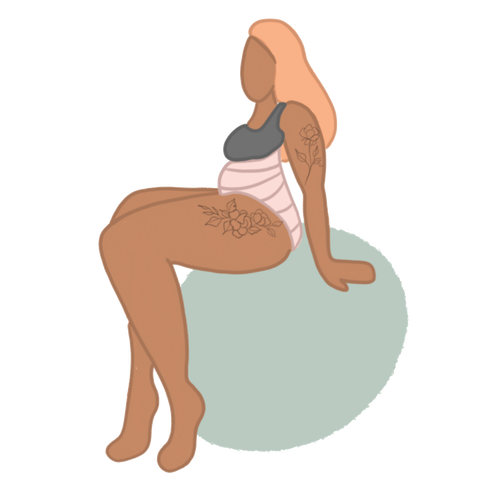Nurturing Through Nature: Exploring the Vital Connection Between Breastfeeding and Pelvic Health

August is not just a month for soaking up the last rays of summer; it's also a time to celebrate and raise awareness about the beautiful journey of breastfeeding. As we embrace Breastfeeding Awareness Month, it's crucial to recognize the profound impact that breastfeeding can have on maternal health, particularly in relation to pelvic health. In this blog post, we'll delve into the intricate connection between breastfeeding and pelvic well-being, shedding light on the benefits and offering tips to support new parents in their journey.
The Surprising Connection: Breastfeeding and Pelvic Health
While the bond between a parent and her child is clear, there is a physical connection that's often overlooked – the link between breastfeeding and pelvic health. The pelvic floor, a group of muscles, ligaments, and tissues that provide support to the pelvic organs, plays a significant role in a person's overall well-being. Engaging these muscles through activities like yoga, pelvic exercises, and even laughter can improve their strength and function. However, breastfeeding also plays an intriguing role in this intricate balance.
The Hormonal Harmony:
Breastfeeding triggers the release of certain hormones that influence pelvic health. Prolactin, the hormone responsible for milk production, has been shown to have a protective effect on the pelvic floor muscles. This hormonal surge helps maintain the strength and elasticity of these muscles, which are often affected during pregnancy and childbirth.
The Uterine Contractions:
During breastfeeding, a hormone called oxytocin is released. Oxytocin not only promotes the "let-down" of milk but also causes uterine contractions. These contractions help the uterus return to its pre-pregnancy size and position. Moreover, they aid in reducing postpartum bleeding and contribute to the healing process after childbirth.
The Role of Core Stability:
Breastfeeding requires a certain degree of core stability to support the posture needed during nursing sessions. This inadvertently engages the core muscles, including the pelvic floor. As you nurse your little one, you're also working to strengthen and stabilize these essential muscles.
Tips for Supporting Pelvic Health During Breastfeeding:
-
Stay Hydrated: Adequate hydration is crucial for maintaining healthy tissue function, including the pelvic floor muscles.
-
Practice Good Posture: Sit or stand with a straight spine while breastfeeding. Use pillows or supportive cushions to ensure comfort and maintain good alignment.
-
Engage in Pelvic Floor Exercises: Gentle pelvic floor exercises, like our Core Confidence Program, can help improve muscle tone and support overall pelvic health.
-
Maintain a Balanced Diet: A nutrient-rich diet supports tissue repair and hormonal balance, contributing to optimal pelvic health.
-
Pace Yourself: While multitasking might be a mother's superpower, remember to take breaks and care for yourself to prevent overstraining your pelvic muscles.
Conclusion: Breastfeeding is not only a beautiful way to nourish your child but also a natural means of promoting pelvic health. As we celebrate Breastfeeding Awareness Month, let's remember the remarkable connection between breastfeeding and healing. By embracing this journey with mindfulness and self-care, you're not only nurturing your little one but also honoring your own body's incredible strength.
At Bellies Inc., we're dedicated to supporting parent's on their postpartum journey. Remember, your body is resilient, and understanding the intricate connections within it can empower you to make the best choices for your overall health. Happy Breastfeeding Awareness Month!




